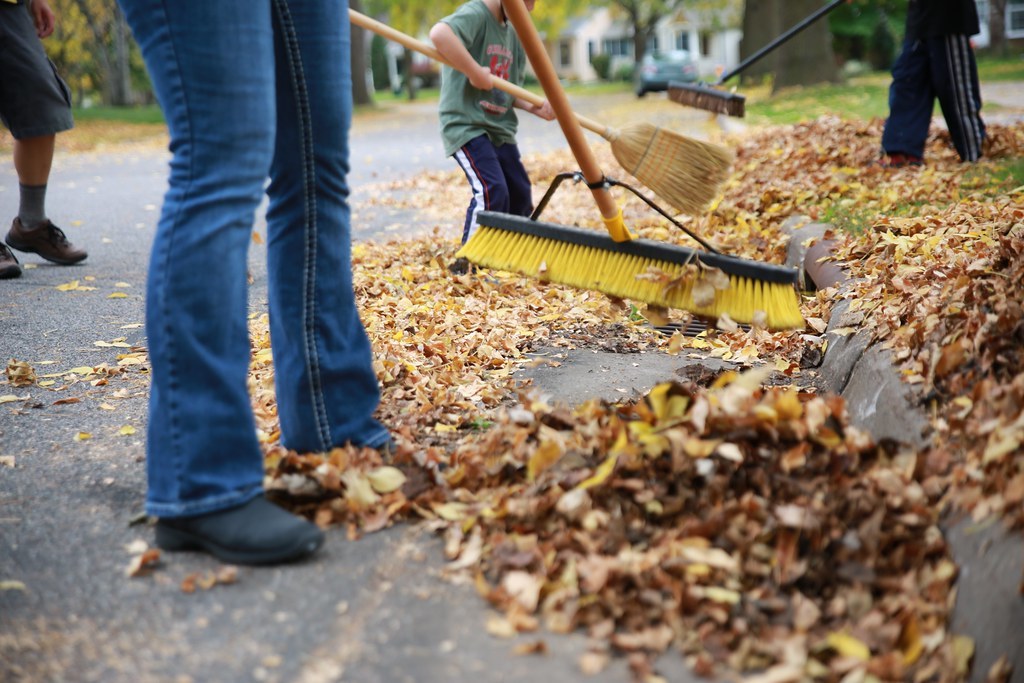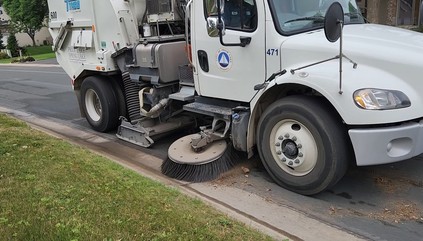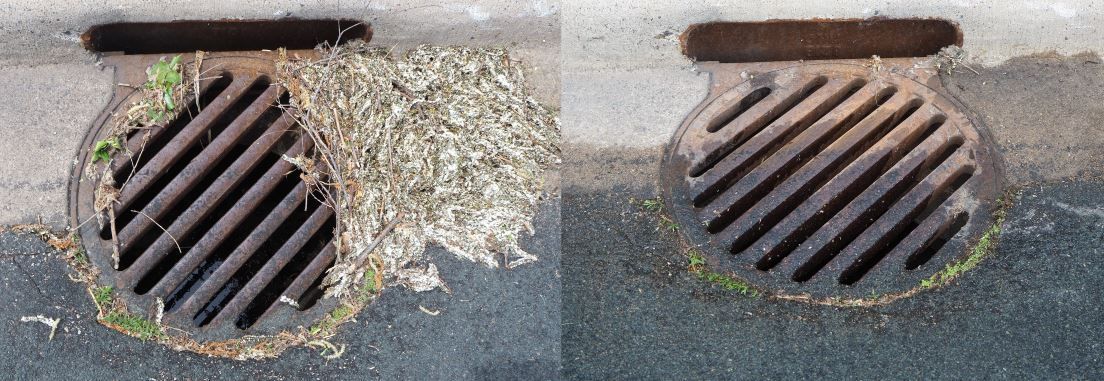|
Fall 2022
 Fall Leaf Removal
Communities recognize the multiple Benefits of a street sweeping program. Research has documented the important water quality benefits of this practice when a comprehensive sweeping program is developed and implemented using recommended practices. The MPCA is in the process of developing tools and initiatives to assist and encourage communities to develop enhanced street sweeping programs specifically for water quality benefit. A street sweeping phosphorus credit calculator has been developed to help communities calculate the amount of phosphorus removed through their sweeping activities. MS4 permittees with enhanced street sweeping programs can track their calculated phosphorus credit and report it as progress towards meeting applicable phosphorus waste load allocations in their annual report or future permit applications.
The MPCA has partnered with the University of Minnesota Water Resources Center to develop the Clean Sweep Education & Training Program to assist local communities in implementing and enhancing their street sweeping programs to help meet water quality goals. Through a series of surveys, focus groups, and case studies, the new Clean Sweep education and training program was created. The first street sweeping workshop was offered on September 27, 2022, at Forest Lake. The kick-off workshop for the new Clean Sweep Education & Training Program provided tools, training, and resources needed to develop and implement an enhanced street sweeping program for water quality benefit.
If you missed it, check out these presentations from the event:
Handouts & Reference Information:
The next Street Sweeping Workshop will be offered at Prior Lake, MN in March or April 2023.
More information:
Find street sweeping guidance at MPCA's stormwater manual.
Street sweeping research projects funded through the Minnesota Stormwater Research and Technology Transfer Program.
Signup for UPDATES email newsletters.
For questions about the Clean Sweep education & Training Program, contact Maggie Karschnia at maggiek@umn.edu .
The cities of Prior Lake and Forest Lake are two communities that developed and implemented enhanced street sweeping programs to more fully protect their water resources. Pete Young of Prior Lake and Mike Kinney of Forest Lake provided descriptions of how they manage leaf collection within their jurisdictions.
The City of Prior Lake: Prior Lake is a growing community centered around three heavily used recreational lakes: Spring Lake, Upper Prior Lake, and Lower Prior Lake. Two of these lakes (Spring and Upper Prior) are impaired for nutrients. Because development within the City first occurred primarily adjacent to the lakes, before modern stormwater treatment requirements were in place, street runoff from these areas receives little or no stormwater treatment.

The City operates two sweepers – one regenerative air and one mechanical. City staff sweep the entire roadway system twice per year (spring and fall), and target direct lake drainage areas for the rest of the non-frozen season to maximize water quality treatment. Staff follow a prioritized sweeping map that divides City roads into two categories based on location and existing water quality treatment. Tier 1 (enhanced sweeping) roads are swept at least 5 times per year, with baseline Tier 2 areas swept twice annually. Prioritizing street sweeping areas based on impairments and drainage areas is the most important component of the City’s program to target water quality improvements in our receiving waters.
|
Street sweeping material is stockpiled and hauled to a landfill or to an organics recycling facility. By tracking the weight of all swept material, the City is able to calculate pollutant removals using the MPCA’s new Street Sweeping Phosphorus Credit Calculator under the “Wet Mass Data” option. According to the calculator, the City annually removes around 350 lbs of total phosphorus from roadways, the majority of which would otherwise be discharged to receiving waters.
One upcoming program enhancement involves updating project flow and program cost tracking methods using our asset management software (Cartegraph), which will allow the City to better-quantify a cost-benefit ratio for phosphorus removal while maximizing limited staff time.
For more information about Prior Lake’s stormwater management program, visit https://www.priorlakemn.gov/government/departments/public-works/water-resources-stormwater-management or contact Pete Young at pyoung@PriorLakeMN.gov
The City of Forest Lake: Forest Lake partnered with the Comfort Lake-Forest Lake Watershed District (CLFLWD) to develop and implement their enhanced street sweeping program. The following links provide an overview of their program along with summary data concerning the amount of material removed and the cost effectiveness of this BMP. For more information contact Mike Kinney at michael.kinney@clflwd.org.
Forest Lake enhanced street sweeping factsheet
Enhanced Street Sweeping Results
 Forest Lake's Regenerative Sweeper
 Before and after sweeping
Additional case studies about what Minnesota cities are doing for enhanced street sweeping can be found in the Minnesota Stormwater Manual.
The existing NPDES/SDS General Construction Stormwater Permit expires on July 31, 2023. Minor revisions are proposed for the new permit in regard to the erosion and sediment control requirements. Some notable changes include:
- Increased dewatering requirements.
- Plastic free erosion and sediment control BMPs will be encouraged.
- There will be relaxed time requirements to allow for achieving permanent stabilization at sites converting areas to native prairie, such as at solar farms.
- Similar to the federal EPA permit, disturbed areas more than 25 acres in size will require stabilization within 7 days regardless of proximity to special waters and
- Representative photos will be required to confirm that the site has achieved final stabilization cover.
There will be a 45-day public comment period for the draft permit in January. It is expected that the revised permit will be issued on August 1, 2023. Exiting permit holders will have an 18-month grace period to either complete their construction or transition to the new permit.
Smart Salting for Local Leaders workshop, December 5th from 11am to 1pm. This interactive workshop will help local leader understand the impacts of chloride on infrastructure and water resources and provide them with specific action steps to make policy changes in their communities to reduce salt pollution.
2023 Minnesota Association of Watershed Districts Annual Conference, December 1-3, Alexandria, MN
MECA Conference Jan. 25 and 26
Minnesota Stormwater Seminar and Research Spotlight Series (held monthly)
Stay tuned for Minnesota Stormwater Manual webinars, tentatively scheduled for January, February, and March 2023.
Visit the Events page in the Minnesota Stormwater Manual for links to other events
Newsletter contact
If you have questions about or suggestions for this newsletter, contact Roberta Getman, MPCA-Rochester, 507-206-2629.
|